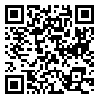BibTeX | RIS | EndNote | Medlars | ProCite | Reference Manager | RefWorks
Send citation to:
URL: http://sjsph.tums.ac.ir/article-1-5616-en.html
2- Ph.D. Associate Professor, Environmental Health Engineering Research Center, School of Public Health, Kerman University of Medical Sciences, Kerman, Iran ,
3- MSc. Department of Diseases Control, Deputy of Health, Shiraz University of Medical Sciences, Shiraz, Iran
4- Ph.D. Student, Neurology Research Center, Kerman University of Medical Sciences, Kerman, Iran
Background and Aim: Considering the importance of cutaneous leishmaniasis in Iran, this study was conducted to present the epidemiological characteristics of patients with cutaneous leishmaniasis, the time trend and the mapping of the disease in the cities under the supervision of Shiraz University of Medical Sciences.
Materials and Methods: Data was collected from the Heath deputy of Shiraz University of Medical Sciences and Health Centers of cities from 2005 to 2014; and was analyzed using Excel and SPSS19 software. Chi square test and Poisson regression were used for analysis.
Results: The incidence of the disease increased from 109 cases per 100,000 in 2005 to 218 in 2008 and decreased to 110 in 2014. The 0-9 age group was the most vulnerable and housewives were the most involved occupational group. Most people had a wet wound. The hands were the most affected. The highest incidence of disease was in the autumn. Zoonotic Cutaneous Leishmaniasis (ZCL) was the dominant type. Cutaneous leishmaniasis was more in northern than southern regions of the province in the recent years.
Conclusion: In the last years of the study, unlike in the early years, the incidence of disease in the northern region of the province was more than the southern regions. This finding could be a warning signal that the disease could be relocating and spreading in areas where the disease was not endemic before.
Received: 2018/06/18 | Accepted: 2018/06/18 | Published: 2018/06/18
| Rights and permissions | |
 |
This work is licensed under a Creative Commons Attribution-NonCommercial 4.0 International License. |





